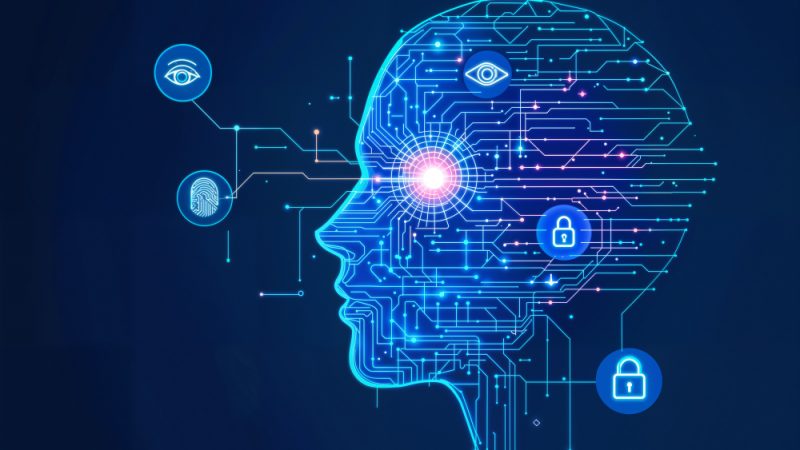The Impact of Big Data on Education

Preparing K-12 and academic students for careers of tomorrow has always been a challenge. With the shift to remote education in 2020, we have started to adopt data and analytics in education more than ever before. This is where big data comes into play, as it can help further refine traditional education systems and make them future-proof. According to Leftronic, over 2.5 quintillion bytes of data are generated daily, with the worldwide amount of data set to reach 5.2 zettabytes by 2025.
In hindsight, these numbers are astronomic, and utilizing as much data in education as possible can help improve existing and develop new educational paradigms. Data by Tech Jury also indicates that 97.2% of organizations are actively investing in big data and AI. This cements the fact that students of today should learn how to utilize big data and analytics to their benefit and develop future-proof competencies early. Let’s take a closer look at the impact of big data on education today, as well as how we can stimulate its application in 2021.
Higher Levels of Student Engagement
Traditional education is stuck in the past when it comes to student engagement and digital learning opportunities. This has become increasingly evident in 2020, as the COVID-19 pandemic has caused millions of students to shift to remote learning to maintain social distancing norms.
By introducing big data into education, teachers can help students engage the learning process far better than by relying on printed books and worksheets. After all, many contemporary career paths in IT, creative arts, and engineering rely on digital platforms and their active application in day-to-day activities. Teaching students to rely on big data will help them get accustomed to future-proof platforms, work methodology, and data repositories better than past generations could.
Development of Personalized Learning Processes
The sheer volume of information available for students through big data is staggering, especially when we take academic institutions into consideration. Every student is inherently a unique person with different aspirations and plans for the future. This is why introducing big data can help personalize and curate each student’s learning experience based on motivation and inherent affinities.
In this aspect, personalization extends from the pace of learning and choice of exercises down to the selection of extracurricular activities and courses. Teachers who rely on big data will be able to guide each student’s learning far more accurately than any career counselor ever could as a result. The long-term results of implementing big data in such a manner can manifest in better specialized, educated, and passionate professionals who love their careers.
Streamlined & Open-Ended Performance Review
Reviewing individual students’ performance has always been a challenge of traditional education, even more so as we move into 2021. No two students are alike and will approach the same course and project in drastically different fashions. Big data can assist teachers in reviewing the performance data of individual students in a far more objective and meaningful manner. This can result in useful data sets and results which can guide the learning personalization process further in the students’ favor. Subsequently, the effectiveness of performance review and the students’ agency in each grading process will be far greater thanks to the mitigation of teacher bias.
Jamie Emerson, the Content Expert at Subjecto, spoke on the topic: “It’s true that reviewing college essays or research papers often comes down to the teacher’s own perspective and experience in the given field. With big data in the mix, however, that teacher can make better judgment calls and compare K-12 and university student’s papers to existing data repositories. The implication here is that big data can be used as a storage, reference, and comparison tool for the benefit of students across the globe.”
Earlier Profession Adoption & Career Planning
We can argue that improper student onboarding in different STEM fields can drive off potential scientists, mathematicians, and programmers from pursuing those career choices. According to Ed Week, only 16% of high school students go on to learn advanced math in academia. Likewise, 37% of US teachers admitted that their school districts only delve into data analytics in secondary schools or beyond.
Teaching students to rely on big data to solve everyday problems and school tasks can help them realize the potential of information in moment-to-moment life. This can lead to much better specialization and professional adoption at the early stages of formal education at the student’s own pace. Moreover, given the modern career paths’ reliance on digital devices and data, career hopping can become easier than ever before, thanks to flexible, personalized learning.
Better International Student Prospects
The past year has been especially difficult for international travel and student mobility due to restrictions introduced in the wake of COVID-19. Introducing big data into academic institutions can further enable teachers to work with students abroad even if they are unaccounted for on campus.
This is especially helpful for students whose future professions inherently rely on digital technologies such as programming, engineering, and various forms of data analytics. Thus, international students would have far better odds at enrolling into programs in other countries from their homes. This can lead to lower tuition fees and continued enablement of students to rely on big data to solve professional issues and conduct relevant research.
Reduced Dropout Margins & Improved Student Performance
Finally, the often-rigid nature of traditional education has resulted in significant dropout margins over the years. According to Education Data, the overall dropout rate for US undergraduates is 40%, with nearly 30% dropping out during their freshman year. While financial difficulties are certainly a discussion for another time, many students drop out due to the sheer volume of work required from them. Most students will argue that freshman years are the most difficult to get through, judging by the obscene amount of work required to pass.
Ironically, many college courses come packed with projects, papers, and study materials that haven’t been updated in a decade, leaving many students depressed about studying. Big data can severely shift the tide in the opposite direction and allow both teachers and students to rely on contemporary information and data sets. This can rejuvenate students’ interest in their college courses and help increase their performance as a result of more relevant and up-to-date learning materials available.
Challenging the Educational Norm (Conclusion)
Implementing big data into traditional education is a year-long challenge, one which has to be tackled in a structured and meaningful fashion. It will take a long time for established educational norms to shift and enable students to rely on big data for more meaningful learning experiences.
Until then, we should advocate for positive change and continue to showcase the groundbreaking impact big data can have on otherwise outdated norms. Technologies and platforms which rely on big data are there for everyone’s benefit, and the students of today will quickly become industry professionals of tomorrow. It’s up to schools across the world to impact how well-versed with big data they are once the latter rolls around.






